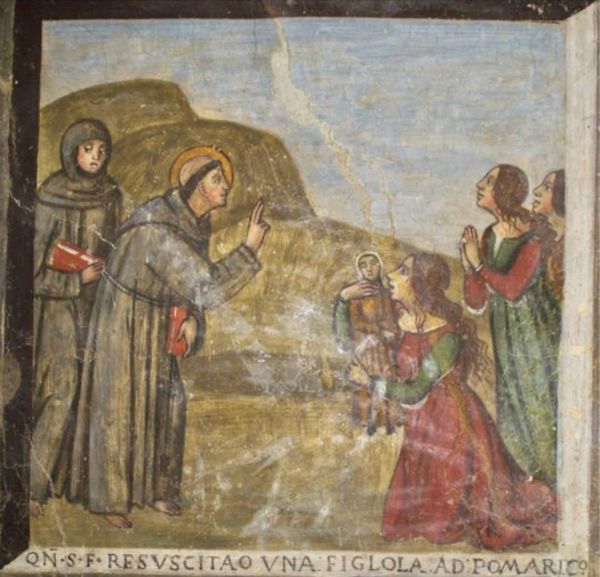The Johannine passage narrates the resuscitation of Lazarus.
In the face of death, the humanity of the Lord testifies to his love for us, his friends.
Francis of Assisi too, sensitive to the ills of the people, in life and in death worked as an instrument of God, a sower of true life.
The Sources, in the Major Legend, give us pearls of life transmitted.
"In the village of Pomaranico, situated in the mountains of Apulia, two spouses had an only daughter, of tender age, whom they loved tenderly. But a serious illness led her to the grave.
Her parents, despairing of having any other heirs, thought themselves dead with her.
Relatives and friends came for that funeral too worthy of tears; but the unhappy mother, lying filled with unspeakable sorrow and overwhelmed with infinite sadness, knew nothing of what was taking place.
Meanwhile St Francis, in the company of a single friar, deigned to visit with an apparition the desolate woman, whom he knew well as her devotee.
Mercifully he spoke to her:
"Do not weep," he said to her, "for the light of your lamp, which you weep as if extinguished, will be restored to you through my intercession".
The woman immediately got up and telling everyone what the Saint had told her, she forbade the burial to take place; then, invoking with great faith the name of St Francis, she took her dead daughter by the hand, and, alive, safe and sound, she made her get up, amidst universal amazement" (FF 1264).
The Superwitness of faith, Francis, acted in such a way as to give glory to the Eternal in the presence of all, testifying that Jesus is indeed
the resurrection and the life, for whoever believes in Him even if he dies will live.
«I am the resurrection and the life; whoever believes in me, even if he dies, will live, and whoever lives and believes in me will not die eternally. Do you believe this?» (Jn 11:25-26)
St Martha, Mary and Lazarus (Jn 11:19-27)












